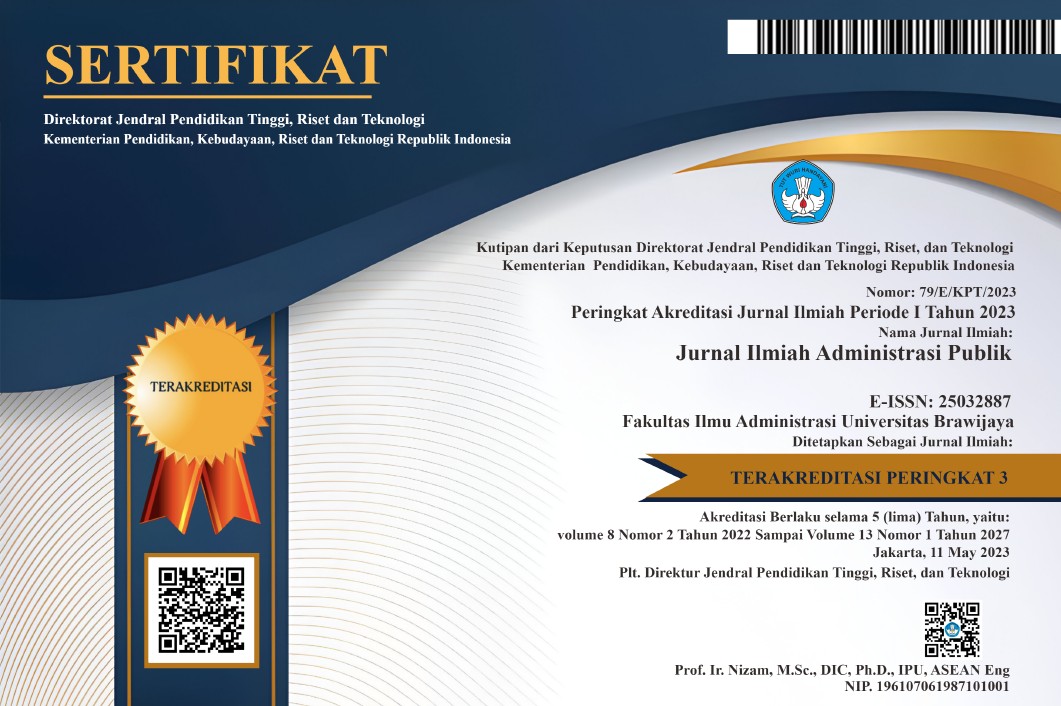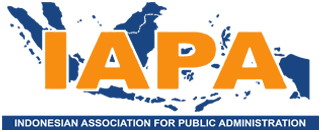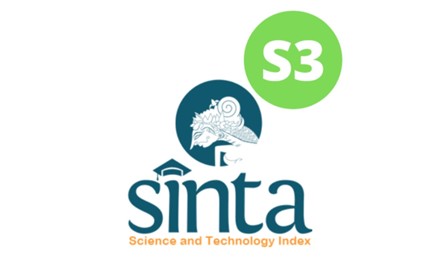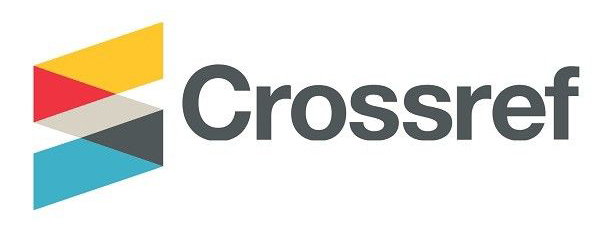The Impact of the Pandemic to Indonesian Households: Social Accounting Matrix Analysis
Keywords:
COVID-19, Social Accounting Matrix, Constrained Fixed Price Multiplier, MicrosimulationsAbstract
COVID-19 is the pandemic that not only triggers a health crisis but also suppresses its economics. Due to the pandemic uncertain duration and immeasurable economic losses, this paper attempts to simulate the short run pandemic economic impact on Indonesia, particularly at the household level. This paper will employ Social Accounting Matrix (SAM) using Constrained Fixed Price Multiplier (CFPM) method to channel the pandemic impact and bring the result to the household microsimulation. Three time-based scenarios are considered, with two severity level sub scenarios for each scenario. The pandemic will be simulated entering the economy through commodity and productivity channels, and the government policies to provide the cushion to the economic will be simulated in the last two scenarios. Based on the simulations, the pandemic slams economics and reduces households’ income, especially bottom income households in urban areas. At that point, the government economic’ stimulus become a saviour by encouraging the economics.References
Amir, H., Irawan, F., Hartono, D., & Nugroho, A. (2015). The Development of Fiscal Social Accounting Matrix for Indonesia (p. 14) [Working Paper in Economics and Business]. Universitas Indonesia.
Ariawan, I., Riono, P., & Farid, M. N. (2020, April 21). COVID-19 in Indonesia: Modeling Scenarios.
Baldwin, R., & di Mauro, B. W. (Eds.). (2020). Mitigating the COVID Economic Crisis: Act Fast and Do Whatever It Takes. Centre for Economic Policy Research Press. https://voxeu.org/system/files/epublication/COVIDEconomicCrisis.pdf
Bodamaev, S., & Tuwo, A. (2020). COVID-19: Economic and Food Security Implications (2020.05.20). World Food Programme.
Carrasco, L. R., Jit, M., Chen, M. I., Lee, V. J., Milne, G. J., & Cook, A. R. (2013). Trends in parameterization, economics and host behaviour in influenza pandemic modelling: A review and reporting protocol. Emerging Themes in Epidemiology, 10(1), 3. https://doi.org/10.1186/1742-7622-10-3
DDTC. (2020). Indonesia Taxation Quarterly Report: Global Tax Policy Responses to COVID-19 Crisis (DDTC Fiscal Research).
Fenichel, E. P., Castillo-Chavez, C., Ceddia, M. G., Chowell, G., Parra, P. A. G., Hickling, G. J., Holloway, G., Horan, R., Morin, B., Perrings, C., Springborn, M., Velazquez, L., & Villalobos, C. (2011). Adaptive human behavior in epidemiological models. Proceedings of the National Academy of Sciences, 108(15), 6306–6311. https://doi.org/10.1073/pnas.1011250108
Google. (2020, May 21). COVID-19 Community Mobility Report. COVID-19 Community Mobility Report. https://www.google.com/covid19/mobility?hl=en
Hartono, D., & Resosudarmo, B. P. (2008). The economy-wide impact of controlling energy consumption in Indonesia: An analysis using a Social Accounting Matrix framework. Energy Policy, 36(4), 1404–1419. https://doi.org/10.1016/j.enpol.2007.12.011
Kemenkes. (2019). Health Statistics 2018 (p. 556). Kementerian Kesehatan.
Ministry of Finance. (2020a). APBN KiTA : Kinerja dan Fakta (APBN
KiTA). Ministry of Finance, Republic of Indonesia.
Ministry of Finance. (2020b, April 1). Langkah penguatan perlindungan sosial dan stimulus ekonomi menghadapi dampak COVID-19 [Press Conference document].
Ministry of Finance. (2020c, April 1). Langkah Penguatan Perlindungan Sosial dan Stimulus Ekonomi Menghadapi Dampak COVID-19. Press Conference, Jakarta.
Ministry of Finance, & Financial System Stability Committee. (2020, May 15). Focus Group Discussion: COVID-19 update and Government policies as Crisis Relief.
Nurdianto, D. A., & Resosudarmo, B. P. (2016). The Economy-wide Impact of a Uniform Carbon Tax in ASEAN. Journal of Southeast Asian Economies (JSEAE), 33(1), 1–22. https://doi.org/10.1353/ase.2016.0009
Pyatt, G., & Round, J. I. (1979). Accounting and Fixed Price
Multipliers in a Social Accounting Matrix Framework. The Economic Journal, 89(356), 850. https://doi.org/10.2307/2231503
Resosudarmo, B. P., & Thorbecke, E. (1996). The impact of environmental policies on household incomes for different socio-economic classes: The case of air pollutants in Indonesia. Ecological Economics, 17(2), 83–94. https://doi.org/10.1016/0921-8009(95)00113-1
Statistics Indonesia. (2011, December). Sistem Neraca Sosial Ekonomi Indonesia 1975—2008. Statistics Indonesia. https://www.bps.go.id/publication/2011/11/07/6f64b0c03431a059c8569105/sistem-neraca-sosial-ekonomi-indonesia-1976-2008
Statistics Indonesia. (2020a, April 1). Jumlah kunjungan wisman ke Indonesia Februari 2020 mencapai 885,07 ribu kunjungan, sementara tpk hotel klasifikasi bintang Februari 2020 mencapai 49,22 persen. Statistics Indonesia. https://www.bps.go.id/pressrelease/2020/04/01/1713/jumlah-kunjungan-wisman-ke-indonesia-februari-2020-mencapai-885-07-ribu-kunjungan--sementara-tpk-hotel-klasifikasi-bintang-februari-2020-mencapai-49-22-persen-.html
Statistics Indonesia. (2020b, April 15). Ekspor Maret 2020 Mencapai US$14,09 Miliar dan Impor Maret 2020 sebesar US$13,35 Miliar. https://www.bps.go.id/pressrelease/2020/04/15/1677/ekspor-maret-2020-mencapai-us-14-09-miliar-dan-impor-maret-2020-sebesar-us-13-35-miliar.html
Statistics Indonesia. (2020c, May 5). Ekonomi Indonesia Triwulan I 2020 Tumbuh 2,97 Persen. Statistics Indonesia. https://www.bps.go.id/pressrelease/2020/05/05/1736/ekonomi-indonesia-triwulan-i-2020-tumbuh-2-97-persen.html
Suharyadi, A., Al Izzati, R., & Suryadarma, D. (2020). The Impact of COVID-19 Outbreak on Poverty: An Estimation for Indonesia [Draft]. https://www.smeru.or.id/en/content/impact-covid-19-outbreak-poverty-estimation-indonesia
Suherdjoko. (2020, May 8). COVID-19: Central Java tracking down 1,500 residents who attended Gowa gathering. The Jakarta Post. https://www.thejakartapost.com/news/2020/05/07/covid-19-central-java-tracking-down-1500-residents-who-attended-gowa-gathering.html
SUTD. (2020, May 5). Predictive Monitoring of COVID-19 Life Cycle Curves. Predictive Monitoring of COVID-19 Life Cycle Curves. https://ddi.sutd.edu.sg/
The Jakarta Post. (2020, March 22). COVID-19: Inadequate medical supplies take toll on lives of Indonesian medical workers. The Jakarta Post. https://www.thejakartapost.com/news/2020/03/22/covid-19-inadequate-medical-supplies-take-toll-on-lives-of-indonesian-medical-workers.html
Thorbecke, E., & Jung, H.-S. (1996). A multiplier decomposition method to analyze poverty alleviation. Journal of Development Economics, 48(2), 279–300. https://doi.org/10.1016/0304-3878(95)00037-2
World Bank. (2020). Commodity Markets Outlook, April 2020. World Bank. https://openknowledge.worldbank.org/handle/10986/33624
World Health Organization. (2020a, February 11). Naming the coronavirus disease (COVID-19) and the virus that causes it. https://www.who.int/emergencies/diseases/novel-coronavirus-2019/technical-guidance/naming-the-coronavirus-disease-(covid-2019)-and-the-virus-that-causes-it
World Health Organization. (2020b, March 11). WHO Director-General’s opening remarks at the media briefing on COVID-19—11 March 2020. https://www.who.int/dg/speeches/detail/who-director-general-s-opening-remarks-at-the-media-briefing-on-covid-19---11-march-2020
Yusuf, A. A. (2020, April 14). Mengukur ongkos ekonomi “sesungguhnya†dari pandemi Covid-19 | SDGs Center. Universitas Padjajaran - Center for Sustainable Development Goals Studies. http://sdgcenter.unpad.ac.id/mengukur-ongkos-ekonomi-sesungguhnya-dari-wabah-covid-19/
Downloads
Published
Issue
Section
License
Copyright (c) 2021 Jurnal Ilmiah Administrasi Publik

This work is licensed under a Creative Commons Attribution-NonCommercial 4.0 International License.
If your paper is accepted, the author identified as the formal corresponding author for the paper will receive an email prompting them to login into Author Services; where via the JIAP Author Licensing Service they will be able to complete the license agreement on behalf of all authors on the paper.














